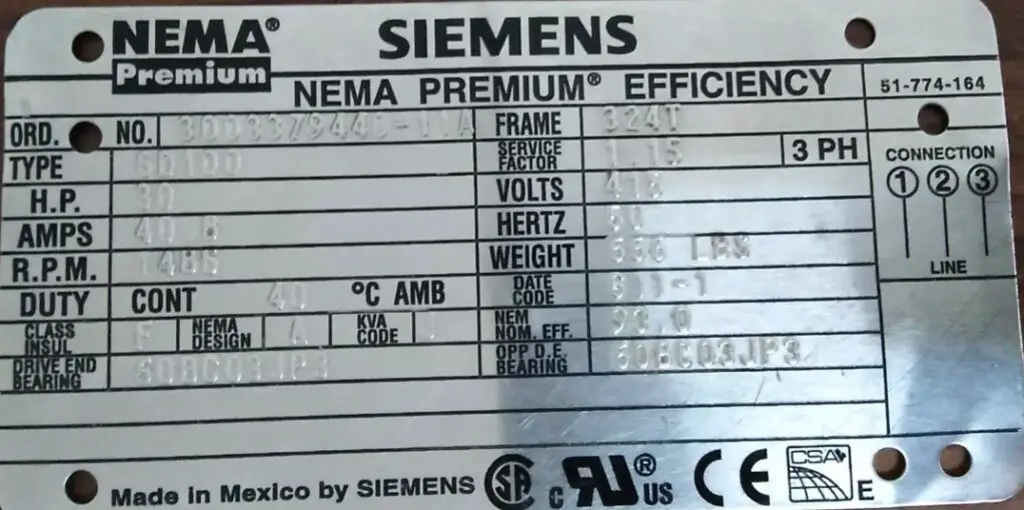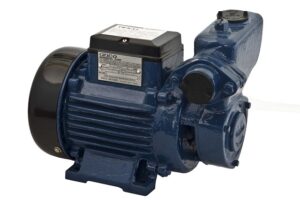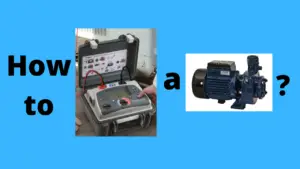Table of Contents
What does motor nameplate mean?
A motor nameplate is a metal or durable label attached to an electric motor that provides critical information about the motor’s design, specifications, and operating characteristics. Understanding the details of a motor nameplate is essential for proper installation, operation, and maintenance.
Common Information on a Motor Nameplate
A typical motor nameplate contains several important pieces of information that are crucial for understanding and operating the motor. Here are the key details you might find on a motor nameplate:
- Manufacturer Details:
- Company name and logo.
- Model or catalog number.
- Power Rating:
- Horsepower (HP) or Kilowatts (kW): Indicates the motor’s output power.
- Voltage (V): Specifies the input voltage(s) the motor can operate on (e.g., 230V, 460V).
- Current (Amps):
- The rated current the motor draws at full load.
- Frequency (Hz):
- Typically 50 Hz or 60 Hz, depending on the region.
- Speed (RPM):
- The motor’s rotational speed at full load, often referred to as the synchronous speed or full-load speed.
- Phase:
- Whether the motor operates on single-phase or three-phase AC power.
- Efficiency:
- Indicates how efficiently the motor converts electrical energy to mechanical energy.
- Power Factor (PF):
- Represents the phase angle difference between voltage and current.
- Insulation Class:
- Specifies the motor’s ability to withstand temperature rise (e.g., Class B, F, H).
- Service Factor (SF):
- A multiplier indicating how much load the motor can handle beyond its rated capacity without damage.
- Duty Cycle:
- Whether the motor is designed for continuous, intermittent, or short-term operation.
- Enclosure Type:
- Describes how the motor is protected from environmental factors (e.g., TEFC, ODP).
- Connection Diagram:
- Shows how the motor windings should be connected (e.g., star or delta).
- Serial Number:
- A unique identifier for tracking and warranty purposes.
- Ambient Temperature:
- Maximum temperature at which the motor can operate safely.
Why Is the Motor Nameplate Important?
- Proper Selection: Ensures the motor is suitable for the application.
- Installation: Provides wiring and connection details.
- Maintenance: Helps in troubleshooting and identifying replacement parts.
- Energy Efficiency: Assists in determining operating costs.
Electrical motor nameplate understanding

Operating voltage:
The motor’s operating voltage can be AC or DC, and its voltage value is crucial for safe operation. Running the motor at low voltage increases the current, which can cause the motor to overheat and burn out. Similarly, high voltage can damage the motor’s winding insulation, leading to failure and burnout.
Connection type:
The motor’s connection type can be either Delta or Star, and the connection diagram is provided for both configurations.
Rated current:
The motor’s rated current, shown in amperes on the nameplate, represents its full-load current. This value is essential for designing overcurrent protection and selecting appropriate components, such as cables, circuit breakers, and contactors, which must all be sized based on the motor’s rated current.
Frequency:
Frequency, measured in hertz (Hz), must match the motor’s power source for proper operation. The motor’s output power, as indicated on the nameplate, depends on both the frequency and the rated voltage.
Motor power:
The power of the motor in KW or HP, should be suitable for the mechanical load. You can convert kw to hp if required.
You can use the HP to KW and KW to HP converter online.
Insulation class:
The insulation temperature, or insulation class, indicates the maximum temperature rise the motor’s winding can safely handle during normal operation. Below is a table showing the insulation classes:
| Class A | 105 Degrees C |
| Class B | 130 Degrees C |
| Class F | 155 Degrees C |
| Class H | 180 Degrees C |
Read also my detailed article : Motor insulation class.
IP rating:
The IP code (Ingress Protection) indicates the motor’s protection level against dust, solid objects, and water entering its body. It consists of two numbers, IP XY:
- The first number (X): Represents protection against dust and solid particles.
- Ranges from 0 (no protection) to 6 (completely dust-tight).
- The second number (Y): Indicates water protection.
- Ranges from 0 (no protection) to 8 (protected against prolonged immersion in water).
For example, an IP65 motor is fully dust-tight (6) and protected against water jets (5).
You can find out my other article with more data about What is IP Rating?
Ambient temperature:
Motor Ambient temperature is the maximum allowable temperature of the surroundings that a motor can work properly in.
Motors should run properly in a temperature range. This parameter is set on the nameplate as a temperature degree (i.e. 40°C AMB). If the motor ambient temperature is not mentioned on the nameplate, then it’s considered as 40°C,
Motor power factor:
It shows how effectively your motor uses electrical energy. For more details about the power factor, you can find it in my other article What is Power Factor (pf)?
What to do if the power factor is not on the nameplate? In some cases, the power factor is not mentioned on the nameplate. Don’t worry in this case:
- For single phase motor, we suppose the power factor is 0.75
- For three-phase motors, we suppose it is 0.85
Motor service factor (SF):
Service Factor (SF) of an Electric Motor
The service factor (SF) is a multiplier that shows the motor’s ability to handle temporary conditions that exceed its full-load torque or horsepower. It offers a safety margin for situations where the motor experiences occasional overloads or fluctuating loads.
Key Points About Service Factor:
- Definition:
- The service factor is a decimal or whole number, such as 1.15 or 1.25, displayed on the motor’s nameplate.
- When multiplied by the motor’s rated horsepower or torque, it gives the maximum output the motor can handle briefly without damage.
A 5 HP motor with a service factor of 1.15 can handle up to 5.75 HP temporarily (5 × 1.15 = 5.75 HP). - Purpose:
- It allows the motor to handle short-term overloads without failure.
- Provides flexibility for applications with fluctuating or unpredictable loads.
- Limitations:
- Continuous operation at the service factor rating generates more heat, reduces efficiency, and shortens the motor’s lifespan.
- It is best to operate the motor close to its rated capacity and use the service factor only for occasional overloads.
- Higher Service Factor – Is It Better?
- A higher service factor provides a greater safety margin, making the motor more adaptable to temporary overloads.
- However, it is not a substitute for proper motor sizing. For applications requiring continuous heavy loads, a motor with a higher horsepower rating is recommended.
Recommendations:
- Use the service factor wisely, ensuring the motor operates within its rated capacity most of the time.
- Avoid continuous operation at the service factor limit to ensure the motor’s longevity and efficiency.
- For demanding applications, choose a motor designed for the expected load conditions.
In summary, the service factor offers extra capability for handling temporary overloads but should not replace proper motor selection for long-term performance and reliability.
Motor Duty cycle:
The duty cycle refers to the operating time of a device compared to the total time in a given time period.
It is often expressed as a percentage and is used to describe the load or stress placed on a machine or equipment over a specific period, typically within an hour. In the context of electric motors, the duty cycle helps to determine the motor’s ability to handle varying loads and operating conditions.
There are different types of duty cycles, including:
- Continuous Duty: In this type of duty cycle, the motor runs continuously under a constant load within its specified power rating and operating conditions.
- Intermittent Duty: This duty cycle involves the motor operating for alternate time intervals with both loaded and unloaded periods. The duration of the loaded and unloaded periods can vary based on the specific application.
- Short-Time Duty: Short-time duty refers to a duty cycle where the motor is designed to operate for a short period at a constant load. The duration of the operation is predetermined, and the motor is not intended for continuous operation under such conditions.
Understanding a motor’s duty cycle is crucial for choosing the right motor for a specific application. The duty cycle defines how long the motor can operate under specific conditions without overheating or sustaining damage.
Operating a motor beyond its designed duty cycle can result in overheating, premature wear, and potential failure. To ensure reliable and efficient performance, it’s important to select a motor with a duty cycle that matches the operational demands of the application.
Motor NEMA design:
The National Electrical Manufacturers Association (NEMA) design standards provide guidelines for the manufacturing and performance of various electrical equipment, including AC motors. These standards help ensure consistency and interoperability between different manufacturers’ products and facilitate the proper selection and application of motors for specific industrial or commercial purposes.
NEMA has established design standards for various types of AC motors, including induction and synchronous motors. These standards cover a range of motor characteristics, such as dimensions, output power, speed, torque, efficiency, and service factors.
Different NEMA designations are assigned to motors based on their specific design and operational features.
NEMA designations for AC motors typically include:
- NEMA Design A: This design is typically associated with general-purpose and moderate starting torque applications.
- NEMA Design B: These motors are designed for high-starting torque applications and are commonly used in compressors, conveyors, and other industrial equipment.
- NEMA Design C and D: These designs are intended for applications requiring very high starting torque, such as heavy-duty industrial machinery and equipment.
NEMA designations are crucial for helping engineers, manufacturers, and users understand the capabilities and limitations of AC motors.
By following NEMA standards, stakeholders can select the most suitable motor for a particular application, ensuring optimal performance and longevity.
Rotational speed (RPM):
Motor RPM is necessary for the load side. For example, a pump’s performance depends on its speed.
Motor RPM is mechanical information, in my work, I need this information when I order a new induction motor for a mechanical load. I asked the mechanical engineers about the load RPM to make sure that the motor was suitable for the load.
The most common speeds of the induction motors are 1500 and 3000 RPM, however, you will never find these numbers on the nameplate because, these are the synchronous speed, while the motor runs below it. It’s common to find the motor speed at 1485 RPM or 2890 RPM
Why motor nameplate current is not the same as the motor’s actual current?
The current indicated on a motor’s nameplate is typically the full load current (FLC) or full load amps (FLA) that the motor is expected to draw when operating at its rated load under normal operating conditions.
However, the actual current drawn by the motor during operation can vary for several reasons:
- Load Variations: The current drawn by the motor can change depending on the load requirements. If the motor is operating under a load that is different from the rated load, the actual current may deviate from the nameplate value.
- Operating Conditions: Factors such as temperature, altitude, and ambient conditions can affect the motor’s performance and current draw. Higher temperatures, for instance, can lead to increased resistance and higher current draw.
- Efficiency: The efficiency of the motor influences the actual current drawn. Lower-efficiency motors might draw more current to produce the same output compared to higher-efficiency models.
- Power Factor: The power factor of the motor can also influence the current drawn from the power supply. A lower power factor can lead to an increase in apparent power and consequently the current drawn from the supply.



